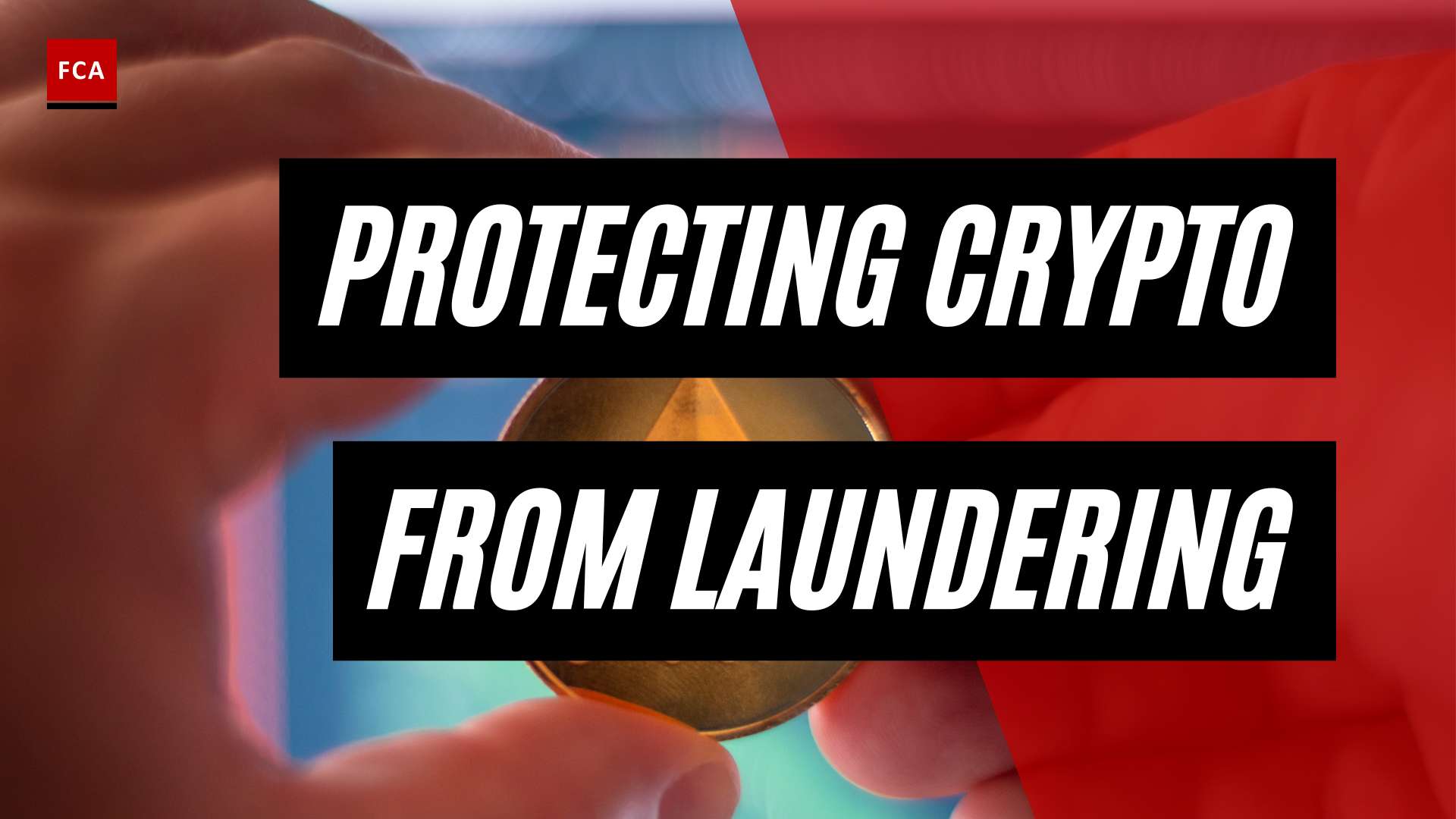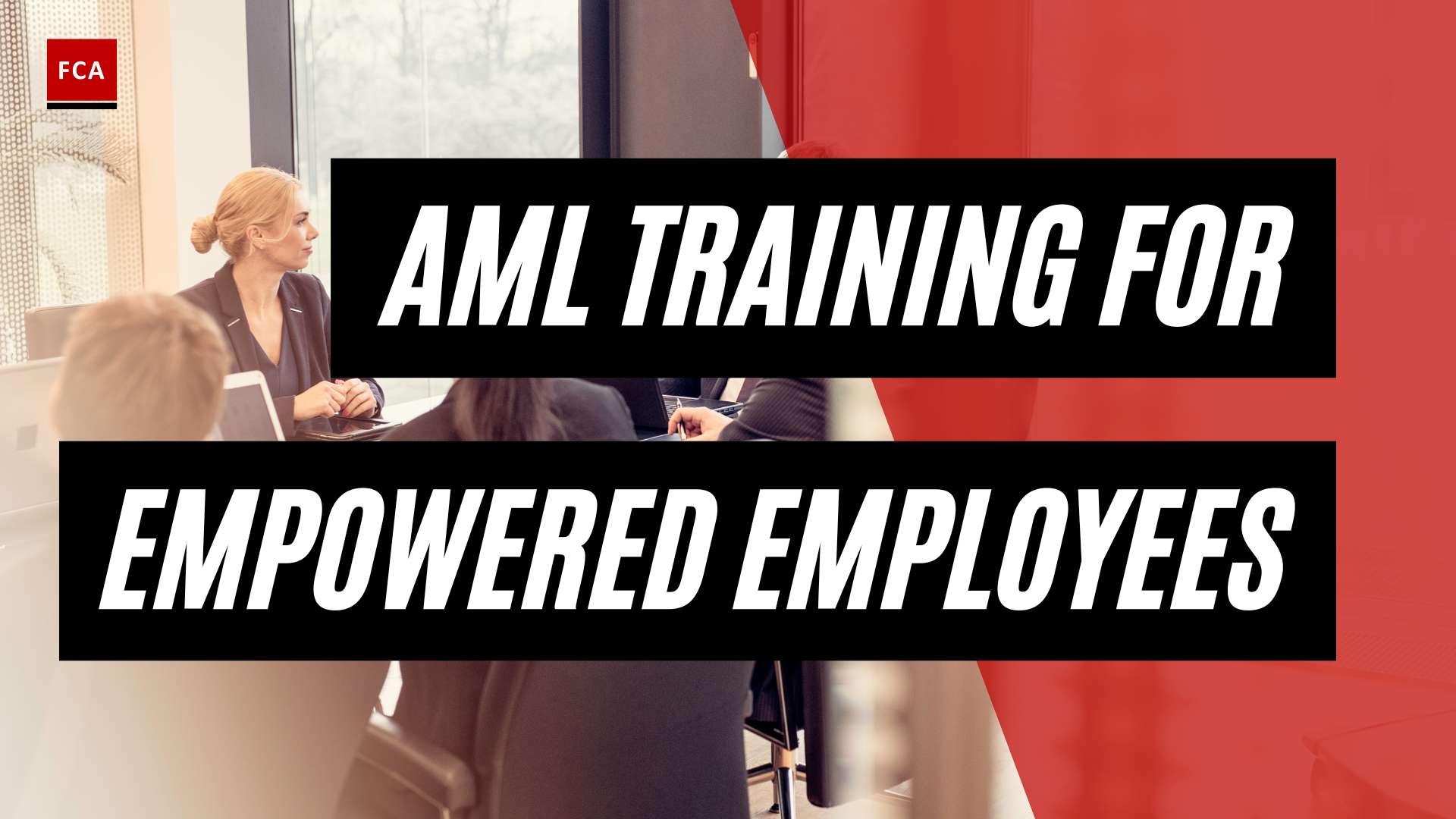Understanding Beneficial Ownership
To effectively navigate the world of anti-money laundering (AML) regulations, it is essential to grasp the concept of beneficial ownership and the significance of transparency in this context.
Definition of Beneficial Ownership
Beneficial ownership refers to the individuals who ultimately enjoy the benefits and rights of ownership over a legal entity or asset, even if the ownership is formally held by another party. These individuals have control over the entity or asset, either directly or indirectly, and derive economic benefits from it. Beneficial owners can include individuals, corporations, or other legal entities.
The concept of beneficial ownership is crucial in the fight against money laundering and other financial crimes. By identifying the true owners behind legal entities, authorities can better trace illicit funds and uncover the individuals who may be involved in illegal activities. This information plays a vital role in ensuring transparency and accountability in the financial system.
Importance of Beneficial Ownership Transparency
Transparency in beneficial ownership is a fundamental aspect of AML compliance. It enables authorities, financial institutions, and other relevant stakeholders to identify and assess potential risks associated with money laundering, terrorism financing, and other illicit activities.
By disclosing beneficial ownership information, financial institutions can conduct thorough due diligence on their customers and establish a more comprehensive understanding of their risk exposure. This information is invaluable when assessing the legitimacy of transactions and detecting suspicious activity that may require further investigation or reporting.
Furthermore, beneficial ownership transparency promotes a level playing field, discouraging individuals from using complex legal structures to hide their true ownership interests. It also creates a deterrent effect, as individuals with malicious intent are less likely to engage in illicit activities if they know their identities can be easily traced.
For financial institutions and compliance professionals, understanding and adhering to beneficial ownership regulations is critical to maintaining robust AML compliance programs. By implementing effective measures to identify and verify beneficial owners, financial institutions can contribute to the global efforts aimed at combating money laundering and protecting the integrity of the financial system.
In the next section, we will delve deeper into the specific regulations surrounding beneficial ownership and explore their role in AML compliance. Stay tuned for valuable insights into the key features and challenges associated with these regulations. For more information about AML compliance, visit our article on anti-money laundering compliance.
Beneficial Ownership Regulations
To effectively combat money laundering and financial crime, jurisdictions around the world have implemented beneficial ownership regulations. These regulations play a crucial role in anti-money laundering (AML) compliance efforts, promoting transparency and accountability. In this section, we will provide an overview of AML regulations, discuss the role of beneficial ownership regulations in AML compliance, and explore key features of these regulations.
Overview of AML Regulations
AML regulations are designed to prevent and detect money laundering, terrorist financing, and other illicit financial activities. These regulations require financial institutions and designated non-financial businesses and professions (DNFBPs) to implement robust measures to identify and mitigate the risks associated with money laundering.
AML regulations typically involve a multi-faceted approach that includes customer due diligence, transaction monitoring, reporting of suspicious activities, and ongoing risk assessments. These measures aim to ensure that financial systems are not abused for illicit purposes and that the integrity of the global financial system is maintained.
Role of Beneficial Ownership Regulations in AML Compliance
Beneficial ownership regulations are a significant component of AML compliance. They focus on identifying the individuals who ultimately own or control a legal entity, such as a company or trust. By understanding the beneficial owners, authorities can effectively trace the flow of funds and detect potential money laundering or illicit activities.
These regulations require entities to collect and maintain accurate and up-to-date information about their beneficial owners. Financial institutions and DNFBPs are often required to conduct due diligence checks to verify the identity of these individuals and assess the potential risks associated with them.
By promoting beneficial ownership transparency, these regulations enhance the ability of authorities to investigate and combat financial crimes. They also help prevent the misuse of legal entities for money laundering, tax evasion, and other illicit activities.
Key Features of Beneficial Ownership Regulations
Beneficial ownership regulations typically include key features that guide compliance efforts. These features may vary across jurisdictions, but they generally include:
-
Definition of Beneficial Owner: Clear definitions of who qualifies as a beneficial owner, ensuring consistency and understanding across the regulated entities.
-
Identification and Verification: Requirements for the identification and verification of beneficial owners, including the collection of relevant information such as full name, date of birth, residential address, and nationality.
-
Record-Keeping: Obligations to maintain accurate and up-to-date records of beneficial ownership information, enabling authorities to access and analyze the information when needed.
-
Reporting Obligations: Mandated reporting of beneficial ownership information to relevant authorities, allowing them to assess and investigate potential financial crimes.
-
Penalties and Enforcement: Penalties for non-compliance with beneficial ownership regulations, including fines, sanctions, and potential criminal charges. Enforcement mechanisms are essential to ensure entities take their compliance obligations seriously.
By implementing these key features, beneficial ownership regulations strengthen AML compliance frameworks and contribute to the global fight against money laundering and financial crime.
Understanding the importance of beneficial ownership regulations and their role within AML compliance is vital for professionals working in compliance, risk management, and anti-financial crime. By adhering to these regulations and implementing effective AML compliance programs, organizations can contribute to a more secure and transparent financial system. For more information on AML compliance, refer to our articles on suspicious activity reporting and customer due diligence.
Compliance Challenges
Complying with beneficial ownership regulations can present several challenges for organizations striving to combat money laundering and financial crime. In this section, we will explore three key challenges: identifying ultimate beneficial owners, verification and documentation requirements, and addressing privacy concerns.
Identifying Ultimate Beneficial Owners
One of the main compliance challenges is accurately identifying the ultimate beneficial owners (UBOs) of entities. UBOs are individuals who ultimately own or control a legal entity, either directly or indirectly. The complex ownership structures found in some organizations can make it difficult to determine the true UBOs.
To overcome this challenge, organizations must conduct thorough investigations and due diligence to unveil the individuals behind the entities. This may involve examining ownership records, corporate structures, and beneficial ownership information provided by clients. Organizations can also leverage technology solutions and data analysis tools to streamline the process of identifying UBOs and ensure compliance with regulatory requirements.
Verification and Documentation Requirements
Once the UBOs have been identified, organizations must verify their identities and collect appropriate documentation to support their beneficial ownership status. Verification requirements may include obtaining identification documents, such as passports or national identification cards, and conducting additional checks to confirm the accuracy of the provided information.
To meet these requirements, organizations need robust customer due diligence (CDD) processes in place. CDD involves verifying the identity of customers and assessing the potential risks they pose in terms of money laundering or financial crime. By implementing effective CDD procedures, organizations can fulfill verification and documentation requirements while reducing the risk of non-compliance. For more information on CDD, refer to our article on customer due diligence.
Addressing Privacy Concerns
While beneficial ownership regulations aim to enhance transparency and combat illicit activities, they can raise privacy concerns for individuals who may be unwilling to disclose their ownership interests. Striking a balance between transparency and privacy is crucial for successful implementation of beneficial ownership regulations.
Organizations must navigate privacy concerns by ensuring that sensitive personal information is handled securely and in compliance with applicable data protection regulations. Implementing robust data protection measures, such as encryption and access controls, helps safeguard the privacy of individuals while meeting regulatory requirements. Organizations should also provide clear and transparent communication to customers and stakeholders about how their data is collected, used, and protected.
By addressing these compliance challenges effectively, organizations can contribute to the fight against money laundering and financial crime while maintaining the trust and confidence of their stakeholders.
Remember to refer to our article on suspicious activity reporting for guidance on reporting suspicious transactions and activities to relevant authorities. Additionally, organizations should have a comprehensive AML compliance program in place, which includes risk assessments, designated AML compliance officers, and robust internal controls. For more information, you can refer to our articles on AML regulations, AML compliance program, AML risk assessment, AML compliance officer, AML compliance checklist, and AML compliance software.
Implementing Effective Compliance Measures
To ensure compliance with beneficial ownership regulations, organizations must establish robust processes and procedures that prioritize customer due diligence, utilize technology for beneficial ownership identification, and provide training and education for compliance professionals.
Establishing Robust Customer Due Diligence Processes
Effective compliance measures begin with establishing robust customer due diligence (CDD) processes. CDD involves gathering and verifying essential information about customers to assess their potential risk and detect any suspicious activity that may indicate money laundering or other financial crimes. Key steps in establishing robust CDD processes include:
- Conducting a thorough AML risk assessment to identify high-risk customers and transactions.
- Implementing comprehensive customer due diligence procedures, including the collection of accurate and up-to-date customer information.
- Performing enhanced due diligence on high-risk customers, such as politically exposed persons (PEPs) or customers from high-risk jurisdictions.
- Regularly reviewing and updating customer information to ensure its accuracy and relevance.
- Implementing suspicious activity reporting mechanisms to promptly report any suspicious transactions or behavior.
Utilizing Technology for Beneficial Ownership Identification
Technology plays a crucial role in streamlining and enhancing beneficial ownership identification processes. By utilizing advanced tools and software, organizations can efficiently gather, analyze, and verify beneficial ownership information. Some key technologies employed in beneficial ownership identification include:
- Automated data collection and analysis tools that can extract beneficial ownership information from various sources, such as public records and corporate databases.
- Artificial intelligence and machine learning algorithms that can assist in identifying complex ownership structures and detecting any anomalies or red flags.
- Document management systems that securely store and manage beneficial ownership documentation, ensuring easy access and retrieval when needed.
- AML compliance software that integrates beneficial ownership identification with overall AML compliance programs, streamlining the compliance process and reducing manual errors.
Training and Education for Compliance Professionals
To effectively implement compliance measures, organizations must invest in training and education for their compliance professionals. This ensures that they have the necessary knowledge and skills to navigate the complexities of beneficial ownership regulations and fulfill their compliance responsibilities. Some key aspects of training and education for compliance professionals include:
- Providing comprehensive training on relevant regulatory requirements, industry best practices, and emerging trends in beneficial ownership regulations.
- Offering regular updates and refresher courses to keep compliance professionals informed about any changes or developments in the regulatory landscape.
- Encouraging professional certifications, such as Certified Anti-Money Laundering Specialists (CAMS), to enhance expertise and credibility.
- Promoting a culture of compliance through ongoing communication, support, and reinforcement of ethical practices.
By implementing robust customer due diligence processes, utilizing technology for beneficial ownership identification, and prioritizing training and education for compliance professionals, organizations can effectively navigate the complexities of beneficial ownership regulations and maintain a strong compliance posture. These measures contribute to the prevention of money laundering and other financial crimes, safeguarding the integrity of the financial system.
Global Perspectives on Beneficial Ownership Regulations
As beneficial ownership regulations play a vital role in combating money laundering and financial crime, countries around the world have implemented their own specific regulations and initiatives. Additionally, there are international efforts to coordinate and strengthen the fight against illicit activities. Let’s explore the global perspectives on beneficial ownership regulations.
Country-Specific Regulations and Initiatives
Each country has its own set of regulations and initiatives when it comes to beneficial ownership. These regulations aim to enhance transparency and accountability in financial transactions. Here are some examples of country-specific regulations:
| Country | Beneficial Ownership Regulation |
|---|---|
| United States | FinCEN’s Customer Due Diligence Rule |
| United Kingdom | Companies Act 2006 and Persons with Significant Control (PSC) Register |
| Canada | Corporate Beneficial Ownership Transparency (CBOT) Registry |
| Australia | Anti-Money Laundering and Counter-Terrorism Financing Act 2006 |
| Singapore | Companies (Amendment) Act 2017 |
These are just a few examples, and many other countries have implemented their own beneficial ownership frameworks. Compliance professionals need to stay up to date with the specific regulations in the jurisdictions they operate in to ensure effective compliance.
International Efforts to Combat Money Laundering and Financial Crime
Recognizing the global nature of money laundering and financial crime, international organizations and initiatives have been established to foster cooperation among countries. These efforts aim to create a unified approach to combat illicit activities. Some notable international initiatives include:
- Financial Action Task Force (FATF): As the global standard-setter for anti-money laundering and counter-terrorism financing measures, FATF develops recommendations and promotes their implementation worldwide.
- Wolfsberg Group: Comprising major international banks, the Wolfsberg Group develops industry standards and guidelines to combat financial crime, including beneficial ownership transparency.
- Egmont Group: This global network of financial intelligence units (FIUs) facilitates the exchange of information to combat money laundering, terrorist financing, and other financial crimes.
By collaborating across borders, these international initiatives aim to strengthen the global fight against illicit financial activities and promote the adoption of effective beneficial ownership regulations.
Emerging Trends in Beneficial Ownership Regulations
Beneficial ownership regulations continue to evolve and adapt to the changing landscape of money laundering and financial crime. Some emerging trends in this area include:
- Public Beneficial Ownership Registers: Several countries are exploring the establishment of public registers that provide accessible information on beneficial owners of companies. This increased transparency can act as a deterrent to illicit activities.
- Digital Solutions: Technology plays a crucial role in beneficial ownership identification and verification. Digital platforms and tools are being developed to streamline the process, improve accuracy, and enhance efficiency in compliance efforts.
- Enhanced Cross-Border Cooperation: Recognizing the transnational nature of money laundering, countries are strengthening cooperation mechanisms, such as information sharing and mutual legal assistance, to more effectively combat financial crime.
As compliance professionals navigate the complex landscape of beneficial ownership regulations, it is essential to stay informed about country-specific requirements, engage in international collaboration, and embrace emerging trends to ensure robust anti-money laundering compliance programs.
Remember, compliance is an ongoing process, and staying updated with the latest developments in beneficial ownership regulations is crucial to effectively identify and prevent suspicious activities. For more information on anti-money laundering compliance, refer to our articles on anti-money laundering compliance and customer due diligence.








